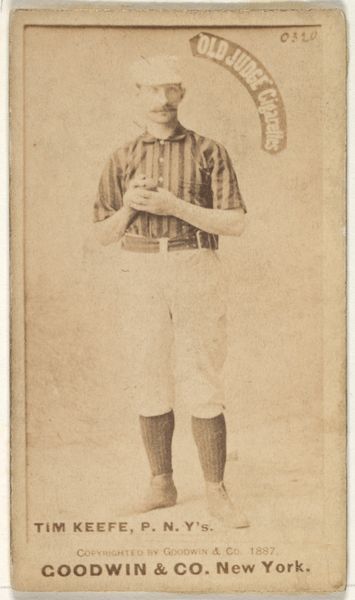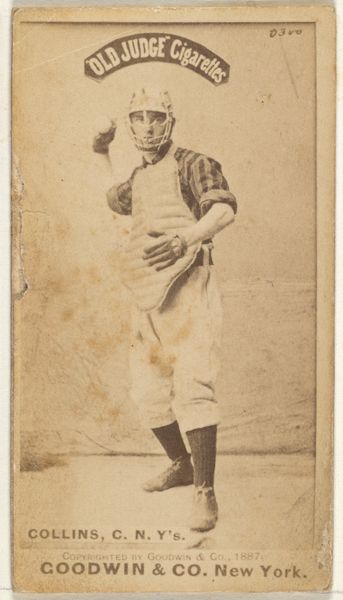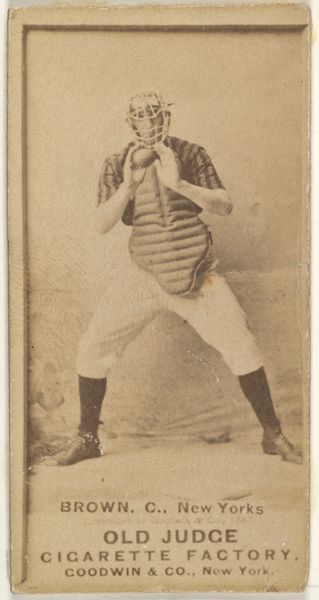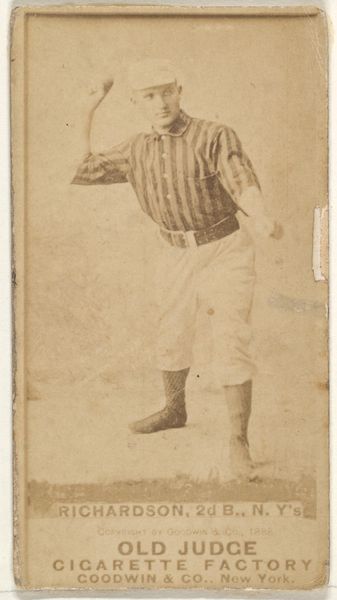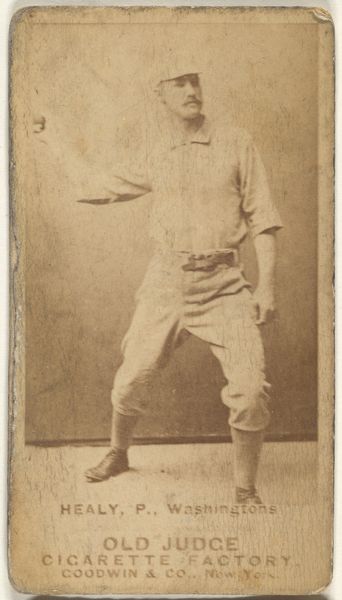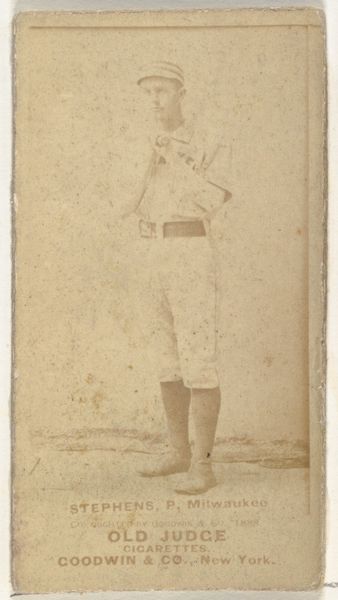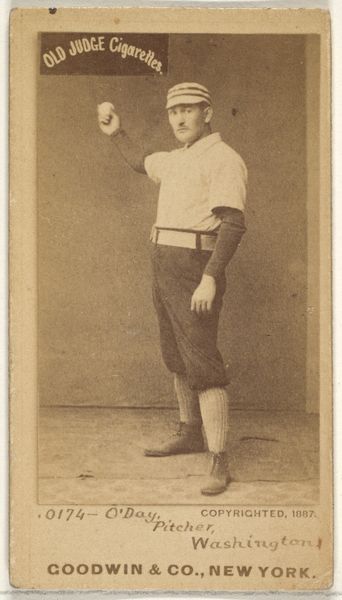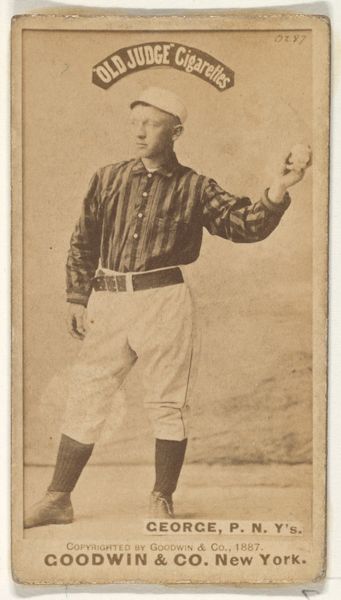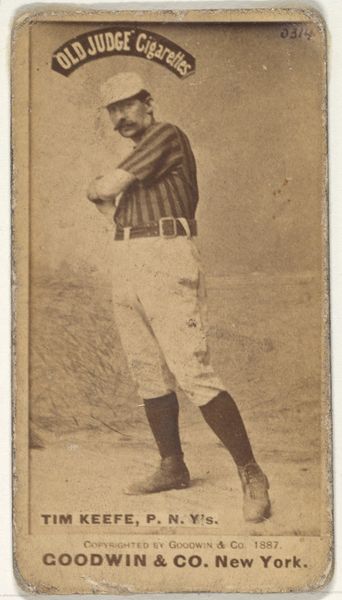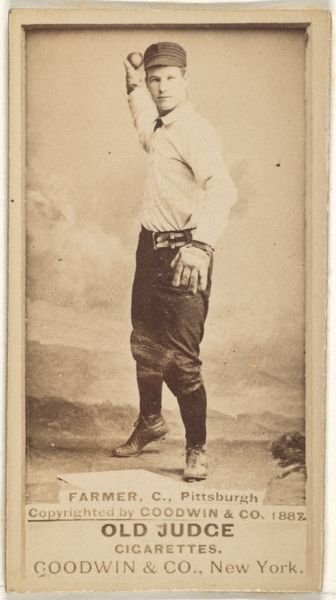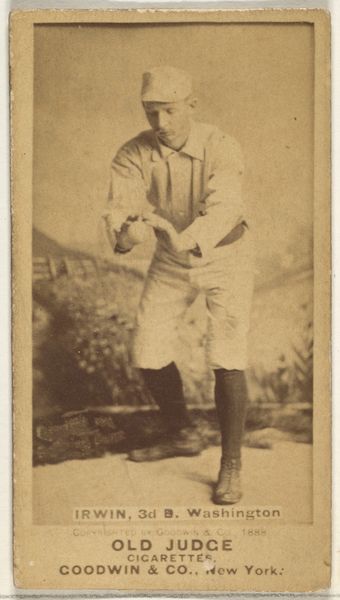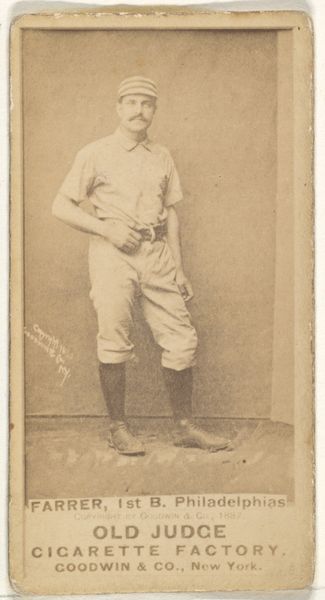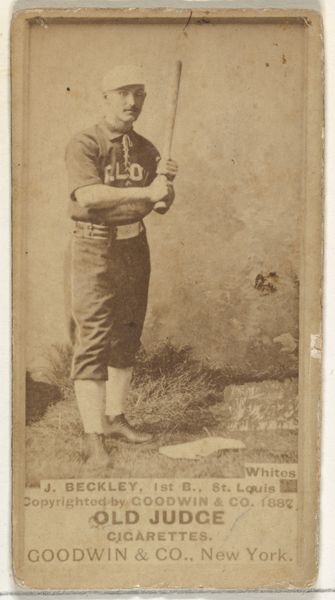
Michael "Mike" Joseph Mattimore, Pitcher, New York, from the Old Judge series (N172) for Old Judge Cigarettes 1887
0:00
0:00
print, photography, albumen-print
#
portrait
#
photo of handprinted image
#
aged paper
#
toned paper
#
yellowing background
#
photo restoration
# print
#
old engraving style
#
baseball
#
photography
#
men
#
genre-painting
#
golden font
#
albumen-print
#
realism
Dimensions: sheet: 2 11/16 x 1 3/8 in. (6.9 x 3.5 cm)
Copyright: Public Domain
Editor: This is a photograph titled "Michael 'Mike' Joseph Mattimore, Pitcher, New York," created in 1887 by Goodwin & Company as part of the Old Judge Cigarettes series. It’s an albumen print on aged paper, giving it a warm, sepia tone. The pose, the uniform… it’s a portrait embedded in commerce, almost like early advertising. What do you see as its key significance? Curator: From a materialist perspective, it’s crucial to understand this albumen print not just as a representation, but as an object produced within a specific economic and social framework. The “Old Judge Cigarettes” tie-in is central. This isn't just art; it's early advertising, mass-produced and circulated as part of the burgeoning tobacco industry. We need to consider the labor involved in producing these prints, from the photographers to the workers in the cigarette factories who included these cards in their products. Editor: So, you're saying it’s less about Mattimore as an athlete and more about the system of production behind the image itself? Curator: Exactly! How does the photograph function within the networks of production and consumption? These cards promoted a specific image of baseball—and by extension, a specific image of American masculinity—that was tied to the consumption of cigarettes. The deterioration of the print itself also becomes significant, revealing the material history of the object and the effects of time and handling. Editor: That makes me consider the golden font more as a branding decision and the portrait as more of a product in that historical context. The aging then signifies how mass culture evolves and changes too. Curator: Precisely. By focusing on the material reality and social context of its creation, we can understand how seemingly simple images played a complex role in shaping culture and consumption. These mass produced objects reveal important historical information about how baseball was consumed during the gilded age. Editor: I never would have considered that beyond baseball cards. Thanks, that’s a perspective shift! Curator: Indeed. Examining materiality can radically alter our understanding of the purpose of a work.
Comments
No comments
Be the first to comment and join the conversation on the ultimate creative platform.
